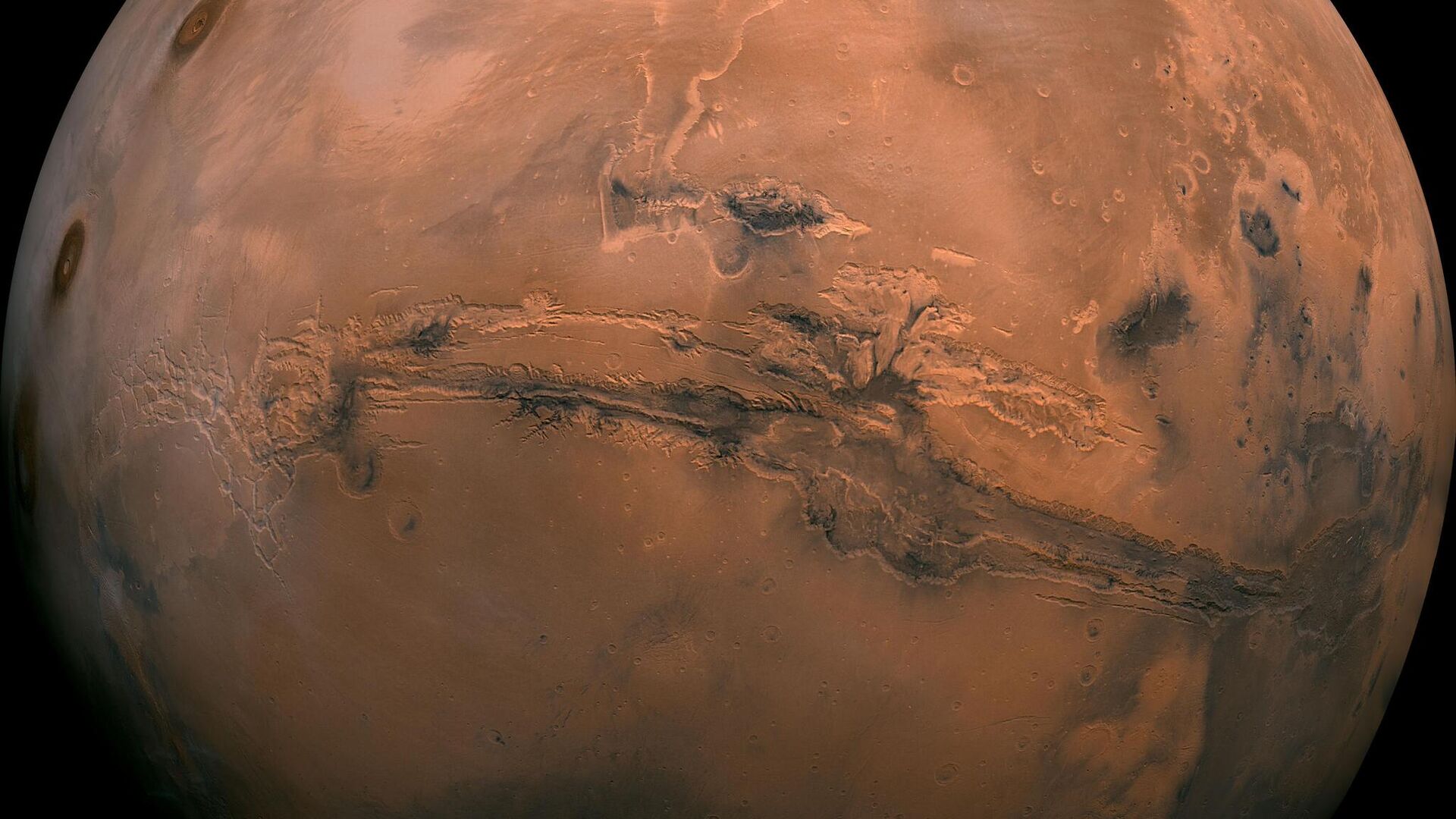ESA Livestreams Images From Mars in Historic First
03:58 GMT 03.06.2023 (Updated: 17:11 GMT 20.06.2023)

© NASA
Subscribe
Images of the Martian surface were taken at an altitude of about 2,400 miles and took about 16 minutes and 44 seconds to reach Earth, which according to the ESA is the “closest you can get to a live view from the red planet.”
The European Space Agency (ESA) on Friday livestreamed images from Mars in a historical first to celebrate the Mars Express orbiter’s 20th anniversary of when it was first launched.
The livestream took place on the orbiter’s 24,516 orbit around Mars, sending the images a distance of about 190 millions miles, all the way back to Earth.
On Friday, join us for one hour of the first-ever #MarsLIVE stream🔴👉https://t.co/0pnQvr6teY
— ESA Operations (@esaoperations) May 31, 2023
To celebrate the 20th birthday of #MarsExpress, this will be the closest you can get to a live view from the Red Planet. Find out more📄👉 https://t.co/jYz6k9ym6u pic.twitter.com/Wgs9a41g8c
“Normally, we see images from Mars and know that they were taken days before,” said James Godfrey, spacecraft operations manager at ESA’s station in Germany. “I’m excited to see Mars as it is now — as close to a martian ‘now’ as we can possibly get!”
The livestream experienced some technical difficulties when it began to rain back in Madrid, Spain, where the images were being received. Even then, over a dozen images were able to reach our planet despite the interference.
The ESA adds that images are uploaded regularly to their online account.
Say cheese! 📸 Over the past 20 years, #MarsExpress has orbited Mars 24,510 times, during which our #HRSC has acquired 6916 images. 😲 We couldn’t quite fit all of them into this video, but you can find the best ones on our Flickr gallery: https://t.co/ey8vXRxlmM pic.twitter.com/rFzxzqOUrT
— DLR - English (@DLR_en) June 2, 2023
"From these images, we discovered a great deal, including the evolution of a rare elongated cloud formation hovering above one of Mars' most famous volcanoes – the 20 km-high Arsia Mons," said ESA's Jorge Hernández Bernal, who is tasked with studying the images.
For those who wonder why the red planet doesn’t look so “red” in its photos, Bernal explains that the livestream is similar to taking a photo with one’s cellphone rather than seeing the planet with the naked eye.

